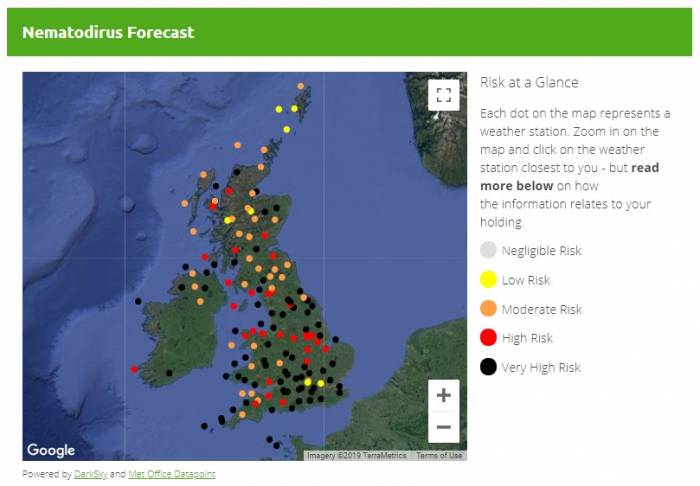2nd May 2019
With risk levels rising sharply in the last seven to 10 days, the SCOPS Nematodirus Forecast at www.scops.org.uk/nematodirus is showing many areas of the UK now at ‘high’ or ‘very high’ risk levels for lambs that are six weeks old. In the cooler regions of the UK temperatures have yet to reach the threshold so farmers in these areas need to watch the forecast carefully.
Lesley Stubbings of SCOPS says: “This year has been very different. The warm spell in February put early-born lambs at risk and many farmers had to treat earlier than normal. And then, as predicted, we also saw risk levels rise again after the cold start to April. Following the free online forecast has provided a valuable guide for sheep farmers and we have had some positive feedback from users.”
Kerry Sykes-Marsden, a shepherd with for 900 ewes in Lincolnshire, agrees: “The SCOPS forecast has taken the guess work out of controlling nematodirus. Based on the advice on the website we’ve treated lambs earlier this year and this has avoided the ‘wait and see’ approach when we haven’t acted in the past to see clinical signs. Some years we have just gone in and wormed at six weeks of age, which could be too early or, even worse, too late.”
A new feature on the website this year is a table that shows when each location on the map has changed colour. Ms Stubbings adds: “The historic data at www.scops.org.uk/forecasts/historic-data is a really useful tool that I recommend having a look at. In some areas the colours have gone straight to black (without turning red) which emphasises the rapid fluctuations in temperatures we have had.”
Further information
Notes to editors
